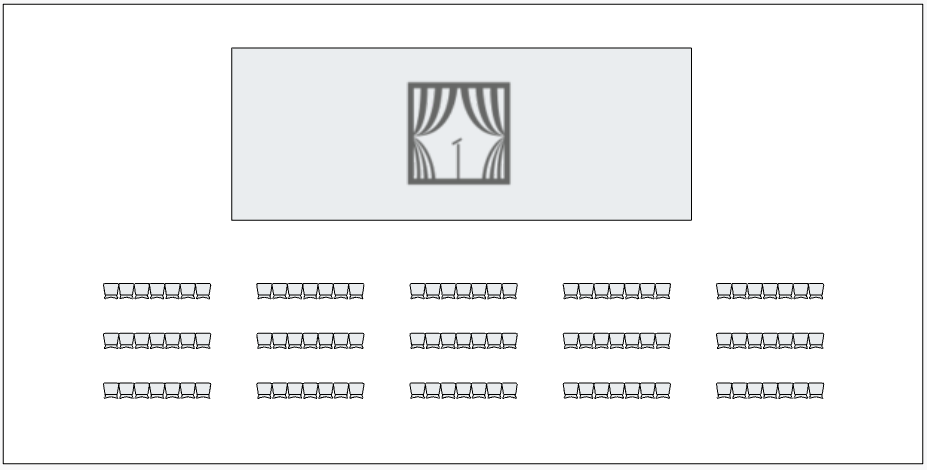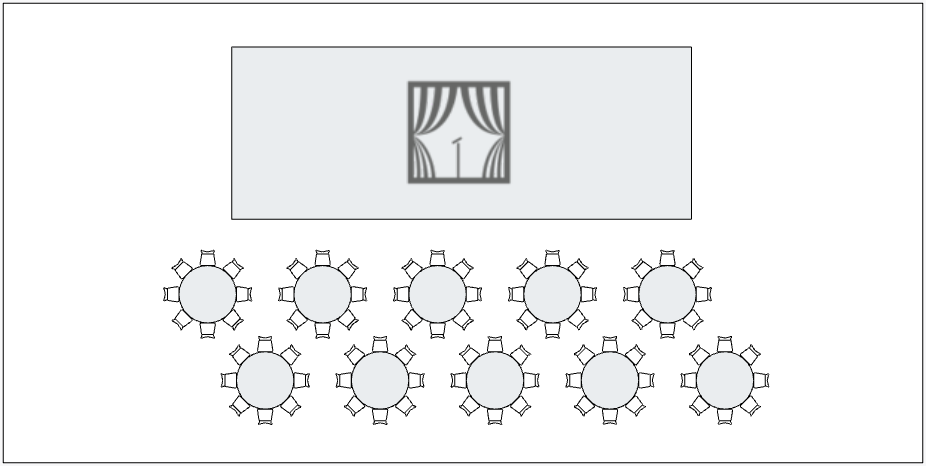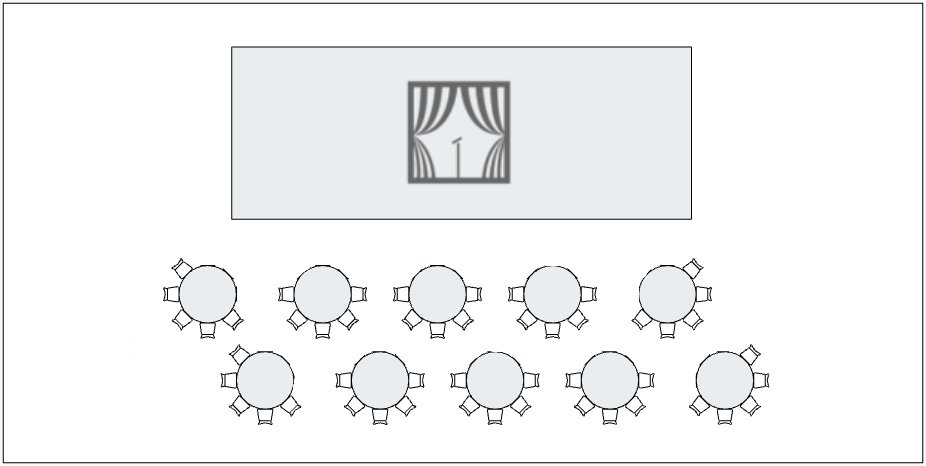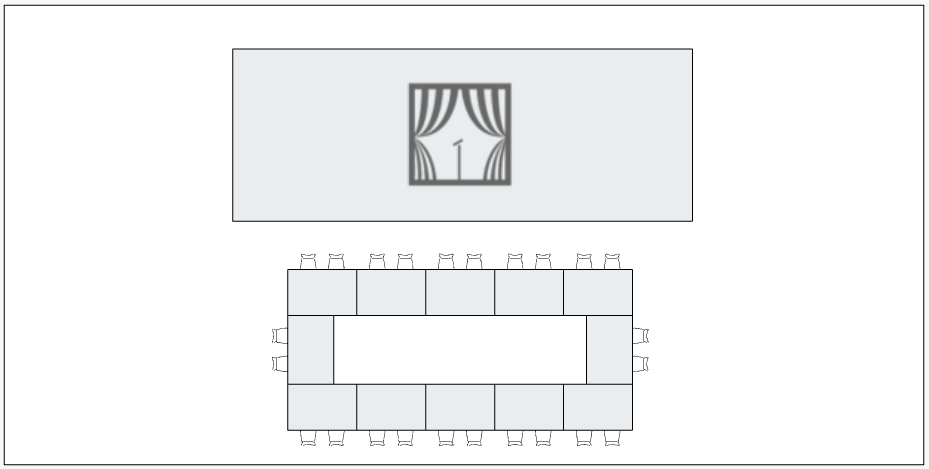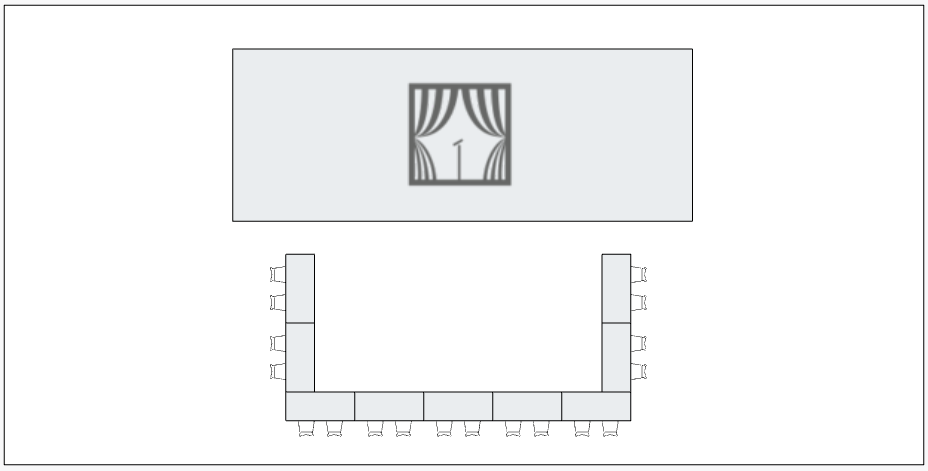
Every detail is important when you’re planning the perfect event—right down to your seating arrangements. How we sit during an event affects how well we can chat with others, how comfortable we are, and how easy it is to pay attention. In short, good seating arrangements lead to good participation. But we know that can feel like a lot of pressure over chairs and tables! So we’ve created this handy guide to help you choose the best seating style for your next event.
In general, events with any group discussions or breakout sessions should be formatted for easy collaboration. This typically includes chairs around a table. On the other hand, lectures and other speaking events should be arranged so the audience can easily see the speakers. If you’re planning one of these types of events, there’s a seating arrangement for you on this list! But what if your event has lectures and group discussions? We’ve got you covered, too. Take a look at these seven common seating arrangements and find the best one for your next event.
1. Theater or Auditorium
Ideal for: Panel discussions & speaking engagements
Auditorium- or theater-style seating arrangements are common for lectures and similar speaker-oriented events. You’ve probably attended lots of events with this style of seating yourself! For this, chairs are placed tightly next to each other in rows. Depending on the size of your audience, you may have one main aisle or multiple aisles.
Pros
With auditorium- or theater-style seating, you’re getting the most bang for your buck in terms of spacing. You’ll be able to fit the maximum number of guests, with no tables or other furniture in the way. Plus, all eyes will be on the main attraction; attendees won’t be distracted by things at the table or group discussion.
Cons
Because you’re fitting the maximum number of guests, those guests will have to walk in front of each other to move around. If someone has to use the restroom or arrives late, they will potentially disrupt others. And even though everyone is close together, talking to each other will be difficult. So group discussions aren’t ideal with this arrangement.
2. Banquet
Ideal for: Networking & charity events
Banquet seating is another common arrangement. With banquet seating, chairs are placed around small, round tables. Typically, each table has eight people, but yours could have a little more or little less—just make sure your guests aren’t too crowded. Most weddings have banquet seating. And while you may not be planning a wedding, it’s a good point of reference.
Pros
Banquet seating is perfect for discussion-oriented events. Attendees are already in their groups, and they can eat or drink while talking. Even if you aren’t serving food, you can fit activities and other items on the table for guests to use during the event. Plus, you can make the tables as small as you want. Looking for intimate conversations for four? You can do that—or you can do tables of 10.
Cons
Banquet seating takes up a lot of room. You need plenty of space for the tables, the chairs, and the guests to move around. Even if the entire event is seated, attendees will still need to use the restroom and get water. And although banquet seating encourages discussion, you can really only talk to your table comfortably. So as the host, you might need to spend extra time assigning seats or pre-selecting the groups.
3. Cabaret
Ideal for: Live entertainment & awards shows
Cabaret seating arrangements are similar to banquet styles, but only half the table has people at it. So instead of eight people sitting around a table, there are only four. And those four people are facing the stage or main attraction. This is ideal for an event that has both a speaker and breakout sessions or for entertainment events that also serve food.
Pros
You still need a lot of space for cabaret style, because you still have tables and chairs. But you may need less space overall. Because there are fewer people at each table, you need fewer chairs and can use smaller tables. Plus, no one’s back has to be turned to the speaker or the entertainment.
Cons
This seating arrangement isn’t ideal for large crowds, though. Because you have half the amount of people at each table, you will need more tables for larger events. For example, a banqueted 50-person event would need between five and seven tables, depending on how many people are at each table. But for a cabaret? That same event would need at least 10 tables!
4. Classroom
Ideal for: Lectures & product launches
Classroom seating is a blend of banquet and auditorium—and it’s exactly what it sounds like. Attendees sit at rows of tables or desks, all facing the speaker or stage. This gives guests the ability to take notes, put their coffee down, and follow along with handouts. Not every speaker will warrant note-taking or handouts, though. And classroom seating takes up a lot of space. We recommend classroom seating for lectures, seminars, and any event that has handouts or worksheets.
Pros
If you want your attendees to be engaged with notes, in-event surveys, or handouts, then classroom seating has you covered. There is plenty of room for guests to pull out their notebook, tablet, and water bottle without cramping or spilling.
Cons
Any seating arrangement with tables will take up more room, which can certainly be a con. Plus, if you want attendees to break out into discussions or have a snack break, moving around will be cumbersome. You’ll also want to make sure the rows aren’t too close together, so the people in the back can clearly see the speaker. (Tiered seating is a good solution for large rooms.)
5. Boardroom
Ideal for: Team briefings & annual meetings
Boardroom seating has one long table, with everyone sitting around it and facing each other. Group leaders and VIPs typically sit at the head of the table (the short edge). Then members of the group fill the seats along the long edges. Because there isn’t a whole lot of room around the long table, boardroom seating arrangements are perfect for small group discussions and meetings.
Pros
Boardroom seating is ideal for conversations, because participants are all facing each other. And while the table might be longer than usual, it still gives a small-group feel. Plus, you can set the leader at the head of the table. That way, everyone has a focal point and knows where to look to keep the conversation moving.
Cons
Many group discussions include a presentation. But boardroom seating doesn’t allow for easy viewing. No matter where the screen is, someone has to turn all the way around to view it. And while most meetings have a leader, you might not want to call attention to that. Someone might be a leader on paper, but they want everyone to feel equal in the discussion. That’s difficult to do with boardroom seating.
6. Hollow Square
Ideal for: Workshops & lunch and learns
For hollow square seating, you would make a square out of tables, and then seat everyone around the tables. It offers the same type of collaboration as boardroom seating, but you can fit more people, and the table doesn’t have a “head.” This is ideal for larger group discussions or a more casual meeting, where the leader doesn’t want to be viewed any differently.
Pros
Much like the banquet and boardroom seating arrangements, this allows for easy discussion. Everyone is facing each other, so talking is simple. And with the square shape, there’s no visual leader. (Which can sometimes be a con if the conversation gets stuck!)
Cons
This arrangement takes up a lot of space. You need at least four tables to make the square, and attendees only sit on one side of the table. So while it’s an ideal set up for small groups, it’s not ideal for small spaces. Plus, there’s no easy way to share a presentation or other visual aid—everyone is facing each other, so one side of the square would have to turn all the way around to view the demonstration.
7. U-Shape
Ideal for: Trainings & presentations
U-shape seating arrangements are just like hollow squares–they just have one side of the square missing! This allows for discussions and presentations at the same time. All the guests can easily look at each other and a presentation or demonstration. It’s the best of both worlds, but it’s not without its drawbacks.
Pros
As we mentioned, u-shape seating allows for both discussion and presentations. Attendees are facing each other, but no one has to turn to see the presenter, either. This is perfect for trainings and other presentations that fluctuate between a single speaker and group breakouts.
Cons
Like hollow seating, this takes up more room with less seating. Because of that, it’s not ideal for large trainings or presentations. (We recommend classroom seating arrangements for those!) Plus, u-shape seating really only works well if there is a designated presenter or moderator. Because of the open side, attendees will be expecting to view or listen to someone. And if the event is entirely discussion based, they will feel awkward.
Conclusion
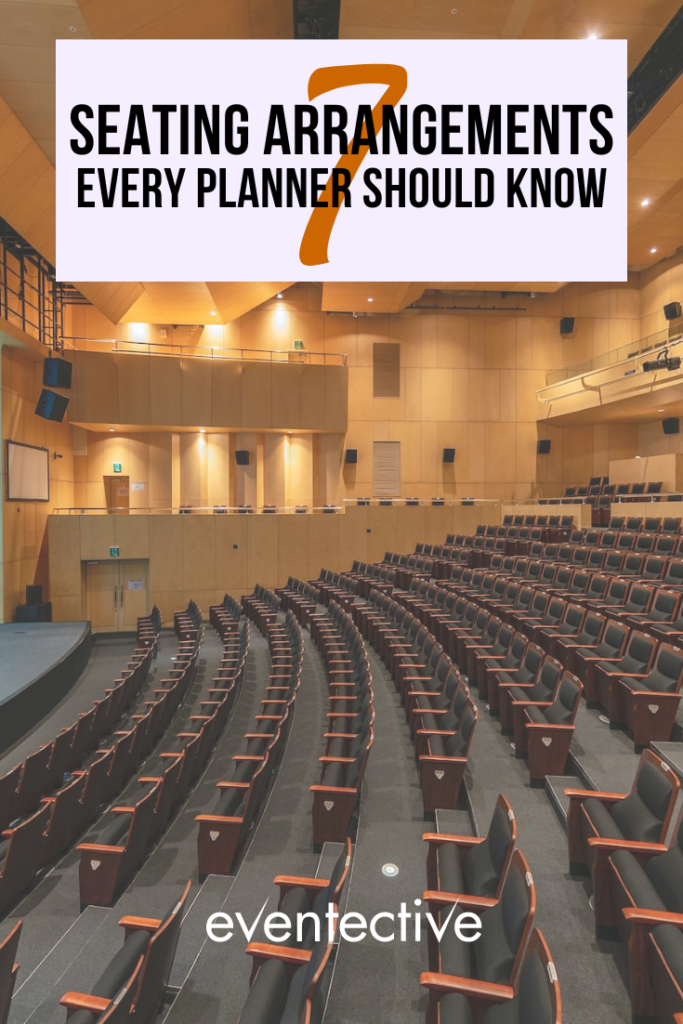
There are plenty of seating arrangements to choose from for your next event. To find the perfect one, consider the number of attendees, whether the event requires group discussions, and the space of your venue. Then you can choose the seating style that will best meet your event needs. And if you’re unsure, you can always speak with your venue director. Venues usually have pictures of past set-ups, you can visualize the space before committing to a seating arrangement.
What are you planning for your next event? Will there be seating?

